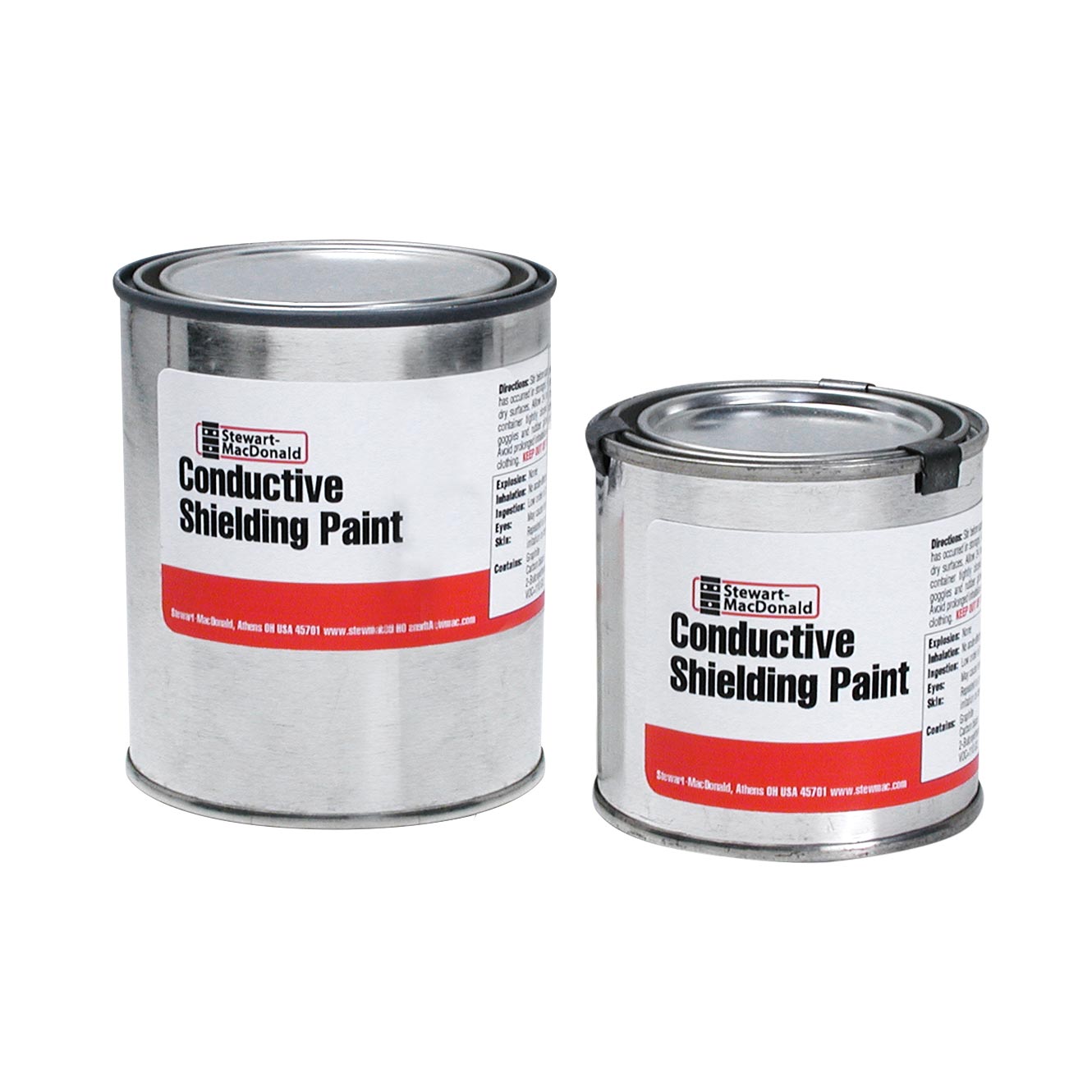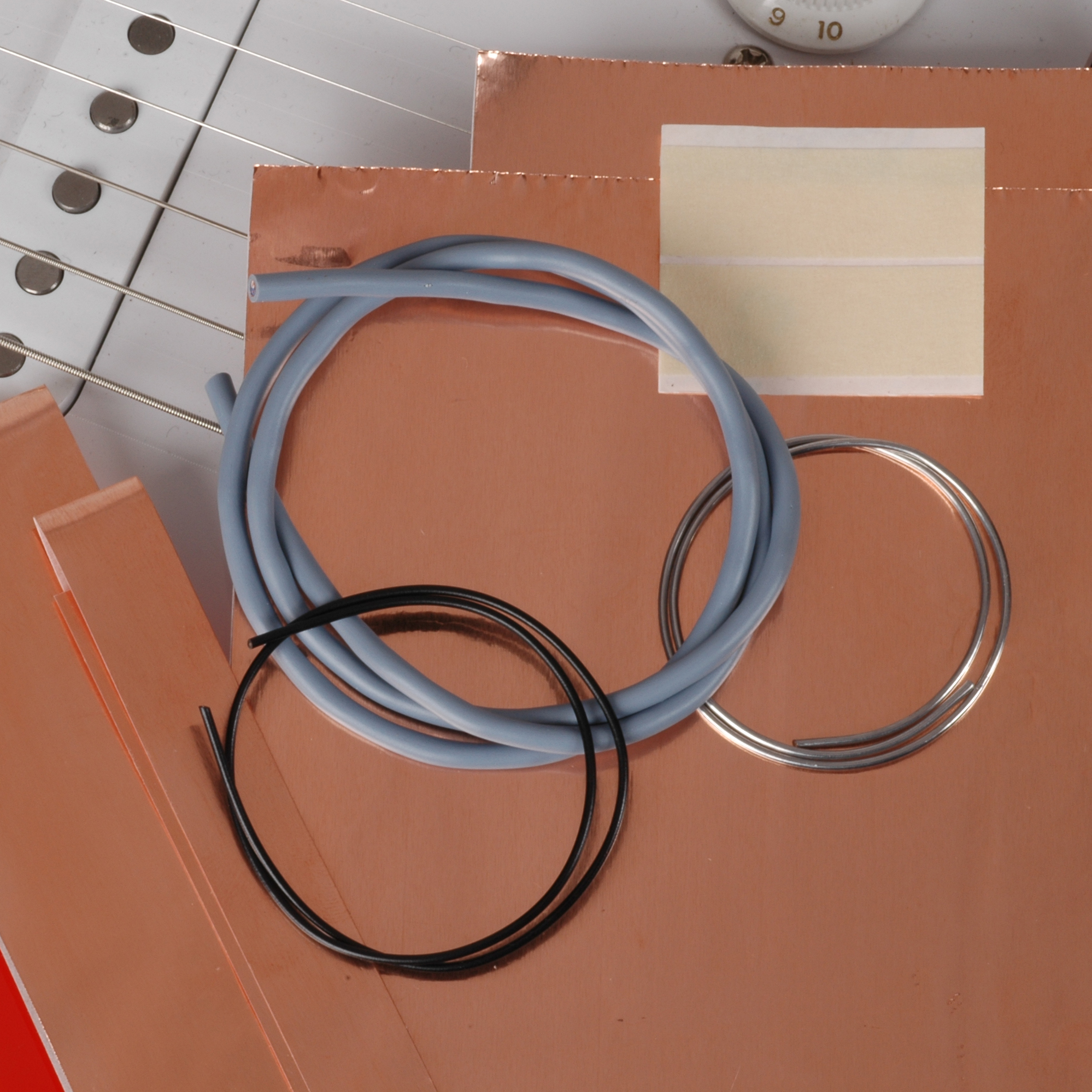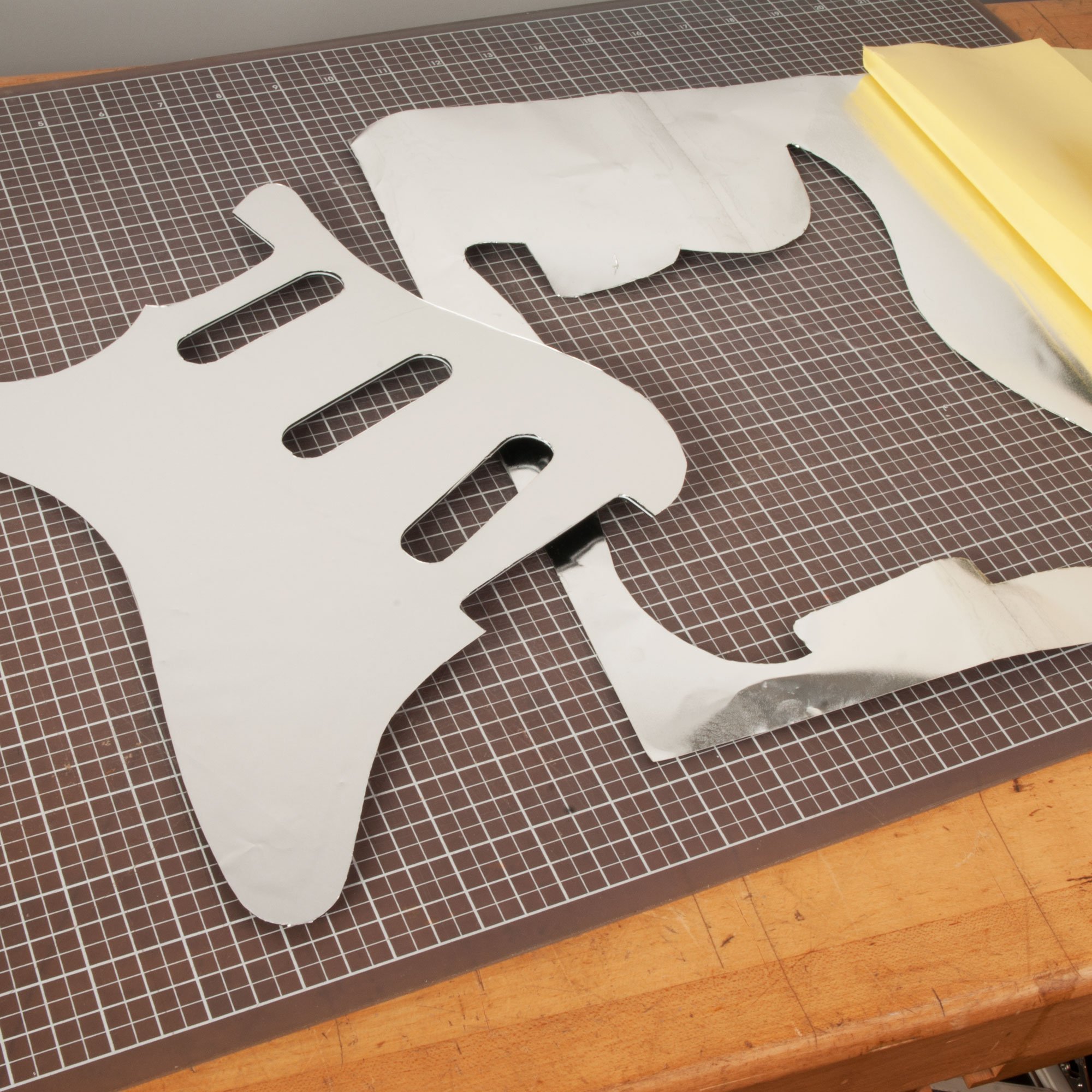Understanding Guitar Wiring, Part 8: Grounding and Shielding
Grounding and Shielding
Shielding eliminates virtually all unwanted interference and hum. In order for shielding to work, must be in contact with ground. There are several ways to apply a ground to a shielding network; when using copper shielding foil, the ground wire can be soldered directly to it. If your volume pot housing is in contact with the foil, a ground jumper to the foil is not necessary. #0029 Shielding paint is also good for shielding control cavities, pickup routs, and drilled holes. The paint is very easy to apply in small tight areas, unlike self-adhesive foils.
To apply ground to a painted cavity, or to a conductive adhesive foil (aluminum or copper) on a Stratocaster® for example, is very simple. Bring the paint or foil over the top of the body in the area that will be under the pickguard, and around the pickguard screw below the bottom tone pot. The foil on the pickguard should surround this screw hole, so that when the pickguard is screwed into place, the grounded foil on the pickguard will come in contact with the cavity shielding. The same technique will work for a Telecaster® control plate/control cavity and a Stratocaster jack plate/jack cavity.
Another method is the use of a solder lug screwed into the cavity's side wall. Make the solder lug out of a scrap of brass and use a small wood screw to affix it. Just solder a wire from the volume pot's casing to this lug for a good ground.
More in This Series
Part One: How a magnetic pickup works
Part Two: What is a potentiometer and how does it work?
Part Three: How is a volume pot wired?
Part Four: What is a capacitor and how does it work?
Part Five: Selector Switches
Part Six: Mini toggle switch basics and push-pull pot basics
Part Seven: Output Jacks
Part Eight: Grounding and Shielding
Part Nine: Understanding impedance and impedance matching
Part Ten: Wiring Glossary
Part Eleven: Sample Diagrams


